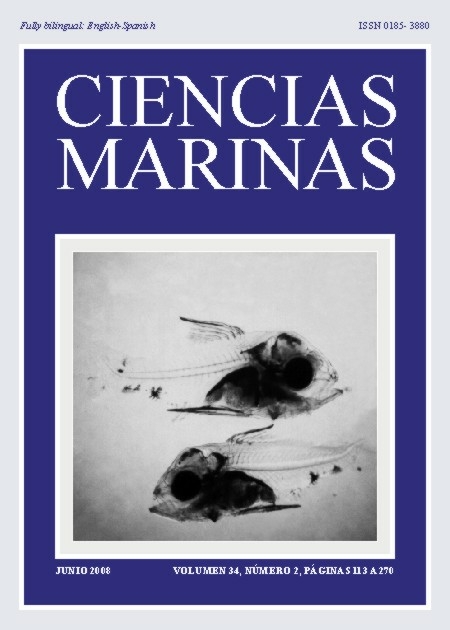Variation in cell densities and pigment concentrations of symbiotic dinoflagellates in the coral Pavona clavus in the eastern Pacific (Costa Rica)
Main Article Content
Abstract
The density and chlorophyll concentrations of symbiotic dinoflagellates (zooxanthellae) in the eastern Pacific coral Pavona clavus were monitored over the transitional period from rainy to dry season in a seasonal upwelling region and in a nonupwelling region of the Costa Rican Pacific coast. The temporal patterns of algal chlorophyll a and c concentrations displayed a negative correlation with light availability, irrespective of the study site, while the cell densities followed a dissimilar pattern. Correlations with water temperature, rainfall, and salinity indicated that a decrease in the density of zooxanthellae was probably associated with a decrease in water temperature due to seasonal cooling in the upwelling region and the negative effects of terrestrial runoff during the rainy season in the non-upwelling region (i.e., low salinity and high turbidity). The results of this study suggest that correlations between zooxanthellae density and water temperature (negative), light intensity (negative), or nutrients (positive), as proposed in previous studies, might not be applicable for regions where seasonal upwelling and strong influence of terrestrial runoff represent important features.
Downloads
Article Details
This is an open access article distributed under a Creative Commons Attribution 4.0 License, which allows you to share and adapt the work, as long as you give appropriate credit to the original author(s) and the source, provide a link to the Creative Commons license, and indicate if changes were made. Figures, tables and other elements in the article are included in the article’s CC BY 4.0 license, unless otherwise indicated. The journal title is protected by copyrights and not subject to this license. Full license deed can be viewed here.

